 Written by Mike Price, OT
Written by Mike Price, OT
A school special needs activity chair facilitates a culture of inclusiveness, which benefits the entire class, not just the disabled student. By enabling a student to better participate in classroom activities, a special needs activity chair fosters ever-important social connections and peer interactions that contribute significantly to a child’s growth and progress. This valuable piece of equipment also allows the teacher to focus on teaching, confident their disabled student is properly supported and equipped to participate as fully as possible in-class activities.
A pediatric activity chair, also known as an adaptive chair, special needs chair, pediatric positioning chair, sitter, or therapy chair, helps a child with special needs sit comfortably. Providing adjustable support and positioning, these chairs come in a wide range of styles, sizes, and accessories. Designs that “grow” with a child will be useful for years to come, while static versions will be outgrown before they are worn out. These pediatric activity chairs allow a child to enjoy daily activities with peers and family members while maintaining proper posture and body alignment and helping develop stronger muscles. Pediatric activity chairs include classroom chairs, corner chairs, kinder chairs, floor/infant sitters, portable seating inserts, and other specialized active seating designs like t-stools, roll chairs, and therapy chairs.
.jpg&newwidth=365&maxheight=200) | Pango Activity Chair for Kids by Circle Specialty View Product |
A postural chair promotes stability and posture for special needs kids who might not have the strength or muscle control to maintain an upright position independently. There are optional features available that secure legs and feet, but all postural chairs have harnesses that keep the user supported and sitting upright.
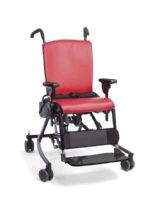 | Rifton Small Activity Chair with Hi-Lo Base - R830 View Product |
Since children who need special seating most likely have mobility limitations, a chair that enables a child to move more freely in a classroom provides more opportunities for play and peer interaction. Also known as mobile seating and mobile special needs chairs, these wheeled mobility aids deliver active seating options and more freedom of movement than static activity chairs.
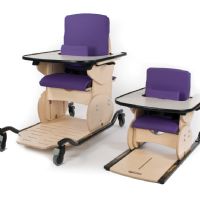 | Smirthwaite Hardrock Chair for Body Rocking View Product |
Body rocking is a common way for children, especially those on the autism spectrum, to self-soothe. Rocking or other excessive movements can be distracting for the child and classmates. Chairs that accommodate body rockers, minimizing movement and encouraging better posture, help kids stay focused and properly positioned so they can concentrate better in class.
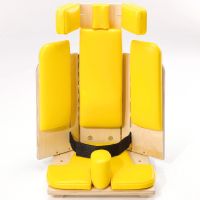 | Corner Chair for Kids by Smirthwaite View Product |
For floor activities, a corner chair is a type of floor sitter that provides postural stability from three sides for a student who tends to fall sideways or backwards if they overstretch. Support from multiple angles prevents tipping so the child can sit upright for circle or floor time with peers, safely and comfortably supported for proper spinal alignment and shoulder position.
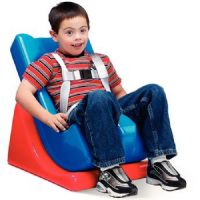 | Tumble Forms 2 Deluxe Floor Sitter View Product |
A floor sitter allows kids who can’t sit up independently and need shoulder and upper trunk support to sit at floor level with classmates. These chairs leave the child’s hands unencumbered for free play, while ensuring proper posture and body alignment is maintained.
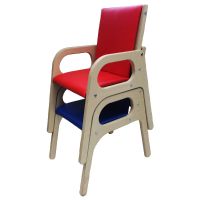 | Smirthwaite Felix Chair for Kids View Product |
Anything that can enhance concentration contributes to learning and is a welcome addition to a classroom. Just as uncomfortable classroom furniture can detract from learning, comfortable, stable padded classroom chairs can contribute to a child’s classroom experience. This is especially true if the chairs have added features like antimicrobial upholstery and arm rests to assist with transitions in and out of the chair.
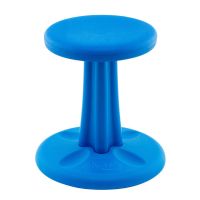 | Kore Design Wobble Chairs for Kids View Product |
A t-stool helps with sensory regulation allowing for self-stimulation, requiring good balance, and strengthening core muscles. This seating solution allows students to wiggle, move, and wobble however they need to while reading, writing, learning, and listening. This helps kids with sensory issues improve focus and perform better in the classroom while developing strength and coordination.
| Seating Matters Kidz Sorrento Therapeutic Chair View Product |
For kids with severe spinal and neurological conditions that keep them seated most of the time, therapeutic chairs provide weight distribution to defend against pressure wounds, a high level of postural support, and they keep the user in proper alignment including the head, neck, and shoulders.
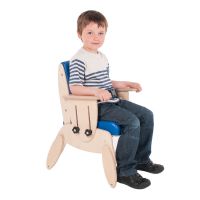 | Juni Postural Chair for Kids by Smirthwaite View Product |
Employing and early intervention seating or activity system supports development of head control, spatial awareness, hand-eye coordination, balance, and strength. Used with infants and young children, early intervention helps kids with special needs get off to the best possible developmental start.
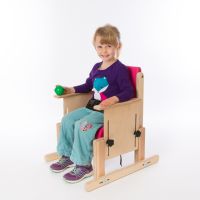 | Heathfield Chair for Postural Support by Smirthwaite View Product |
It’s not necessary to get every available bell and whistle for your child’s activity chair. Pediatric activity chairs often have several optional accessories that aren’t required or even useful at first. With a design that provides proper support and expands to grow with your child, you can add equipment and accessories as your child develops and their needs change.
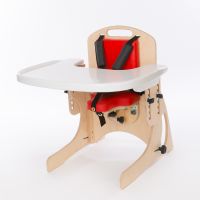 | Smirthwaite Portable Adjustable Hip Spica Chair with Tray View Product |
A hip spica cast covering one or both legs prevents movement while the hip heals, and certainly presents a seating challenge. A specially designed chair will accommodate the ankle-to-navel cast, supporting healing while providing an opportunity for a child to sit up and participate in seated activities at home or in school.
| TherAdapt Feeding Chair / Height Chair for Kids View Product |
Sharing mealtime with peers is an opportunity for socialization and bonding that kids with special needs should not miss out on. Chairs that have a high level of adjustability allow for a child to sit up close to a table for meals and snacks shared with classmates. This helps foster an environment of inclusivity while ensuring the special needs child is posturally supported and can eat in comfort and safety.
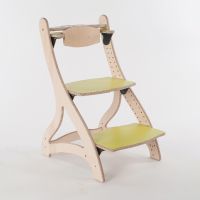 | Zoomi Chair - 2 Styles by Smirthwaite View Product |
Kids grow, and outgrow things, all the time. Furniture that accommodates a growing kid’s needs is not inexpensive, so choosing a chair that has adjustability enabling it to grow with your child is an investment to consider. Instead of buying two or more chairs, a chair that adjusts for growth will have a service life years beyond a single-size chair.
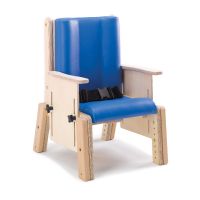 | Postural Chair for Children - Brookfield Chair by Smirthwaite View Product |
When moderate support is called on to help maintain central posture, an adjustable pediatric activity chair offers customizable height, seat depth, and backrest height for an individualized user experience. A chair providing moderate support will allow a child enough freedom of movement to enjoy activities while posturally supported in a comfortable position.
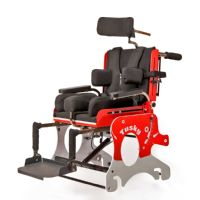 | Drive Medical Tusky Tilt and Recline Seating System View Product |
Pediatric chairs that tilt and recline offer the most appropriate support no matter what the activity. Upright for learning, eating, and other activities, a chair that tilts in space distributes weight to lessen the risk of pressure wounds for kids who are seated all day. The reclining function means a child can comfortably rest or nap while in the chair, or be moved to aid in digestion, respiration, or circulation.
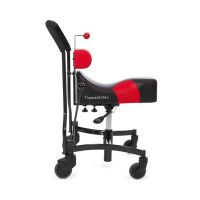 | ThevoSiiS Therapy Chair by Thomashilfen North America View Product |
Cognitive processing disorders affect a substantial number of young people, making it difficult for them to pay attention, sit still, listen in class and remember oral instructions. This can diminish their potential for social functioning and academic success. A pediatric activity chair that addresses sensory issues and motor skills impacted by long periods of sitting will provide comfortable positioning, reduce agitation, and increase focus and concentration for students who benefit from postural as well as sensory processing support.
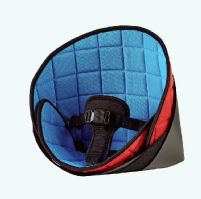 | R82 Scallop Chair for Kids View Product |
Portability and versatility in pediatric activity seating expand a child’s world by making the outdoors more accessible and enjoyable. Children with neurological disorders or weak trunk muscles can enjoy outdoor adventures with their families and friends, having with a supportive comfortable seat at the ready.
To ensure a proper fit, desk height should be measured before purchasing a desk. A height-adjustable frame allows for a good fit now and in the future. The more adjustability, the better the individualized fit. The Smirthwaite Height-Adjustable Tilt Study Desk features height adjustability along with an adjustable angle desktop.
School activity chairs range from basic models that look like standard chairs to chairs with multiple optional accessories and adjustability. Many models have wheels, and some are designed to fit under a school desk. Most school activity chairs also function well at home. Many are adjustable in depth, height, and angle, and can be used for everyday activities with children who have mild to severe levels of physical challenges.
Most activity chairs have a high-low base that adjusts up and down, making transfers in and out of the chair easier. A high level of adjustability ensures the most customized fit for the user, even as they grow.
Different children with different conditions have different needs. Chairs without sides have padding for postural support, but they don’t restrict movement. They are for people who can sit up independently and don’t need much support. The tilt-in-space feature takes the pressure off areas that are at risk for developing pressure wounds.
Combining supportive seating with mobility, pediatric activity seating with wheels opens up opportunities for children to go to another learning area or outside with peers during the school day. Having a wheeled activity chair is also great when on-the-go to keep kids posturally supported while enjoying the experience of travel.
Investing in a chair that can expand and adjust to fit a growing child will make the chair useful for much longer. As time goes on and your child grows, you have the opportunity to add options that will make the activity chair a better fit as time goes on.
Children with cognitive challenges aren’t always aware they need to keep a positioning belt fastened. A seating system that keeps the child positioned correctly, whether they can independently get themselves settled or rely on a caretaker, frees them to concentrate on schoolwork.
Deficits in sensory and perceptual skills can negatively impact vision, balance, and visual perception. Seating that addresses these deficits can assist the user in keeping the head up and in a midline position, with the trunk and limbs in proper alignment.
The standard weight capacity of pediatric activity chairs usually ranges between 100 and 150 pounds.
Personalizing your child’s activity chair will meet their physical needs for postural support, cognitive support, and body movement management. Foot rests, arm rests, head rests, and harnesses are all available to create the safest, most comfortable, most supportive environment.
A: A floor sitter is a pediatric activity chair that can easily be moved from one area to another, all while staying close to the floor. Providing postural support, a floor sitter allows the child to be included in floor time with peers.
A: Any child with special needs that might need some additional assistance in sitting up straight can benefit from the support of an activity chair. Encouraging proper position, body alignment, and helping to develop muscle strength, all while the child engages in daily activities, adds to the quality of education and social interaction for kids with special needs.
A: Pediatric activity chairs are designed to help children with special needs sit comfortably with proper postural positioning and body alignment while participating in activities with their peers. They are designed for functional positioning to provide stability and trunk support, or for restrictive positioning to correct posture and control involuntary movement.
A: A high-low (hi-lo) activity chair is so versatile that it can be like having more than one chair on a single frame. High-low chairs can be for eating, reading, homework, or craft projects, and if you have a model with wheels, your high-low chair can take you most places.
A: An adaptive chair is a comfortable, alternative seating option that encourages proper positioning and posture for special needs children. It allows for increased peer interaction, which benefits physical and mental health of the user.
A: A tomato chair is created by Special Tomato, which has a line of mobility and seating solutions for kids with special needs. All the company’s cushions are formulated from a waterproof yet breathable proprietary blend resulting in a soft, durable, latex-free material. Tomato chairs have a soft inner core that allows children to sit comfortably for longer periods.
A: Pediatric Tumble Forms feeder seat systems provide proper seat positioning for children with special needs. They provide long lasting anti-microbial protection for the life of the system. There are multiple designs ranging from stroller to mobile floor sitter to feeder seat, to seat positioner.
A: A feeder seat is an alternative to a wheelchair or stander, and can be used for meals or any short-term activity at home or in school. A feeder seat makes transitions easy and are available with or without a base.
Pediatric activity chairs give kids with special needs the opportunity to participate in activities with their peers and family members, while their postural support needs are being met. Pediatric seating helps facilitate peer connections. Adaptive chairs ensure special needs students are properly supported while enjoying daily life activities. Rehabmart carries an extensive line of pediatric seating systems, including quality equipment from Smirthwaite Products.
Pediatric activity chairs that are correctly sized, provide the appropriate level of support, and allow for as much independence for students as possible contribute to the quality of life and overall health and wellbeing of kids with special needs.
Thank you for reading about how to choose the best pediatric activity chair for the special needs child in your life! To read more informative articles, visit Caregiver University.

Co-Founder of Rehabmart and an Occupational Therapist since 1993. Mike has spent his professional career working in multiple areas of Occupational Therapy, including pediatrics, geriatrics, hand therapy, ergonomics and inpatient / outpatient rehabilitation. Mike enjoys writing articles that help people solve complex therapeutic problems and make better product choices.